Draining water from a Haier washing machine
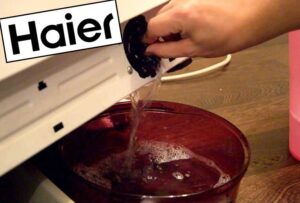 When the unit breaks down during washing, the first step is to rid it of used water. It is extremely important to carry out this procedure, because if you do not remove the liquid from the “home assistant”, you will not be able to carry out diagnostics and begin repairs. Ridding the system of excess moisture will also help avoid damage to the flooring from possible flooding and prevent short circuits, which can be dangerous not only for the equipment, but also for family members. Today we will discuss this topic and share with you how to drain water from a Haier washing machine.
When the unit breaks down during washing, the first step is to rid it of used water. It is extremely important to carry out this procedure, because if you do not remove the liquid from the “home assistant”, you will not be able to carry out diagnostics and begin repairs. Ridding the system of excess moisture will also help avoid damage to the flooring from possible flooding and prevent short circuits, which can be dangerous not only for the equipment, but also for family members. Today we will discuss this topic and share with you how to drain water from a Haier washing machine.
Options for “draining” a Hyer machine
The simplest and safest way to free the machine from water is to use the “Drain/Spin” mode special for this purpose. To do this, you need to translate the program selection to the appropriate designation. Then you should turn off the spin function and start the work cycle by pressing the “Start/Pause” button.
If your device suffers from a one-time failure and does not respond to commands, you will not be able to simply empty the container. To do this, you will need to use forced drainage of the waste liquid. This can be done: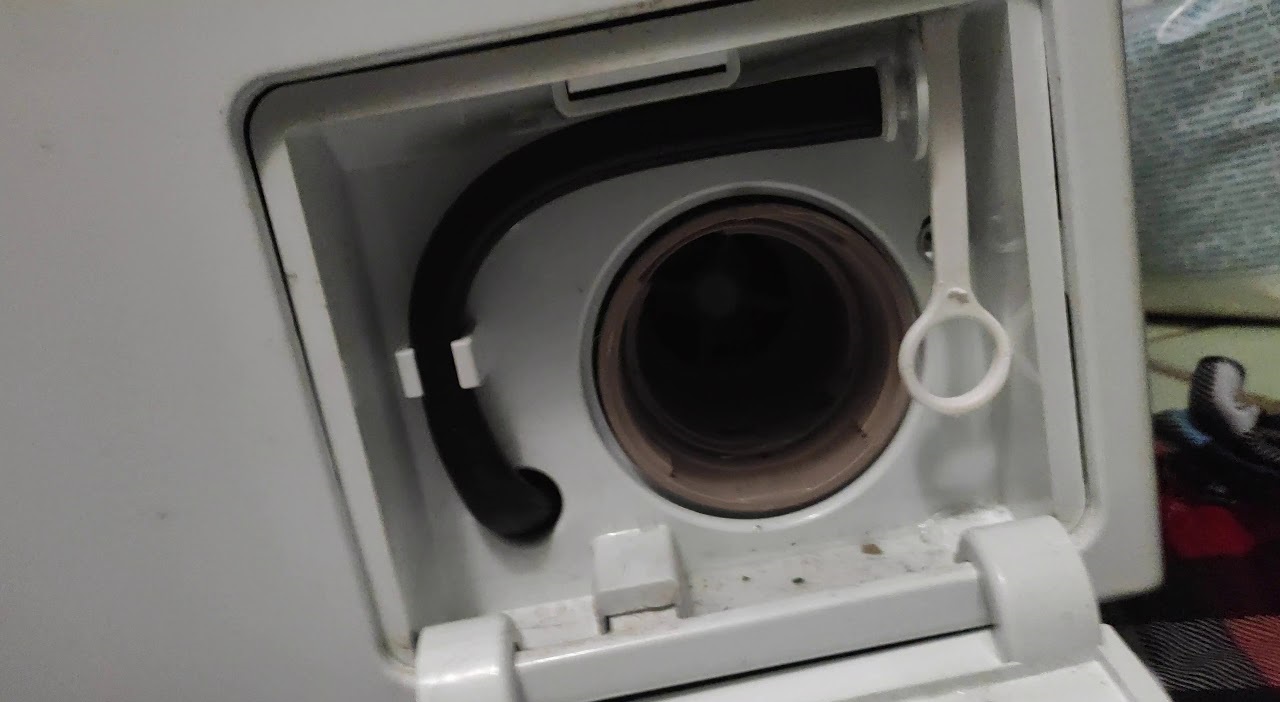
- using a hose so that the water comes out on its own;
- through the drain filter, which will need to be unscrewed before this;
- through the pipe connecting the tank and the snail;
- simply by opening the unit hatch door.
Before forcibly removing liquid from the washing machine, be sure to disconnect the equipment from the power supply and water supply!
All the described methods have both their advantages and disadvantages.In order to choose a method that works, it is important to start from a specific case, since in some of them you can only get by by opening the drum of the machine. However, regardless of what happened, be sure to disconnect the equipment from all communications, analyze the current situation and carefully follow the instructions for removing the liquid.
Through the main filter
If you were unable to start draining the water using the special function for this, try getting rid of it manually through the drain filter. This method can be used even if the washing machine freezes during the operating cycle. The main thing is to remember to take precautions.
The drain filter is a small plastic nozzle in the form of a spiral, which is installed in the drain system hidden behind the decorative panel at the bottom of the front wall of the washing machine body. The garbage filter is so called because thanks to it, all waste liquid goes into the drain without problems, and all debris and foreign objects are retained on the plastic and do not get into the pump, which does not cause clogging. If there is a need to run an emergency drain through this filter, you must do the following:
- use a screwdriver to pry up the technical hatch;
- if it is not there, disconnect the decorative panel using the latches;
- find the garbage filter plug;
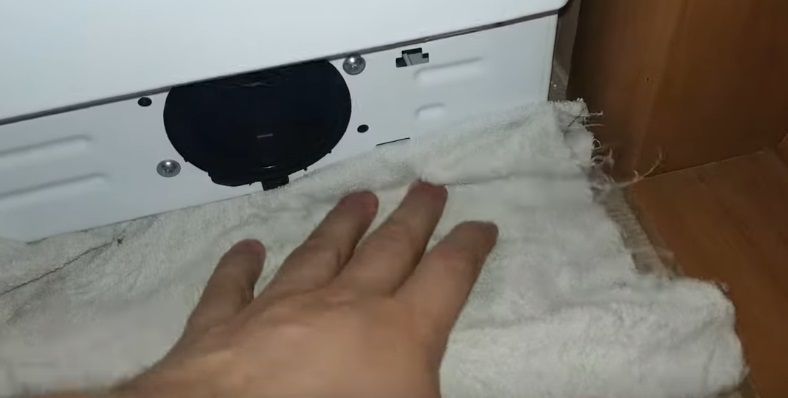
- place a large container for water under it (for example, a baking tray);
- additionally lay down rags or unnecessary towels so as not to spoil the floor covering;
- take the plug with your hands and carefully turn the filter clockwise;
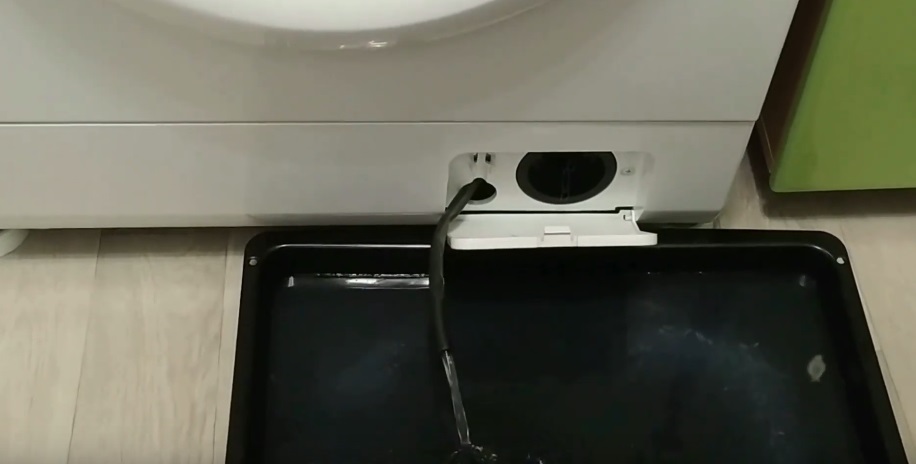
- do not open it completely while there is waste liquid in the system, because in this case the water flow may be too powerful;
- wait until all the liquid has left the tank.
This method is the most effective, however, it also has its disadvantages. Firstly, it is not suitable in a situation where the machine was operating at high temperatures: there is a high chance of getting burns from boiling water. Secondly, a stream of contaminants remaining from the time of the last cleaning may rush through the garbage filter. And finally, the third disadvantage is that users are not always able to install the garbage filter in place evenly and tightly, which is why the “home assistant” can leak during operation.
Let's use the drain hose
You can also drain the water manually using the drain hose. This can be done at any stage of the work cycle, because all you need to do is provide free access to the sewer pipe and prepare a place for drainage. For example, a sink or toilet. We will share how to perform this procedure correctly. You will need:
- find the place where the hose is connected to the sewer;
- loosen the clamp securing the corrugation;
- disconnect the sleeve;
- remove the hose from the rear wall of the case and the hook holder;

- place the corrugation below the washing machine tank;
- lower the end of the hose into a prepared container in the form of a sink or toilet;
- Make sure that all the water comes out of the unit.
Please note: this draining method cannot be used if your machine has a non-return valve installed!
It is generally accepted that using a drain hose is the easiest way to empty the machine. However, this method is not suitable for all housewives.The reason lies in the presence of a check valve, which is used in modern models of washing machines produced by the Samsung brand. This element is necessary in order to prevent the “siphon effect”. So if your unit is equipped with one, you won't be able to simply lower the hose and drain the water.
Dangerous option through the door
Perhaps one of the riskiest methods is cleaning the tank through the hatch door. In order to do this, you must first understand how much water is present in the system, and only then carefully tilt the equipment back, leaning it against the wall. This way, you will reduce the volume of liquid that gets onto the floor after the machine depressurizes. You will need to do the following:
- carefully move the device away;
- lean it against the wall;
- place a large basin or bucket under the machine;
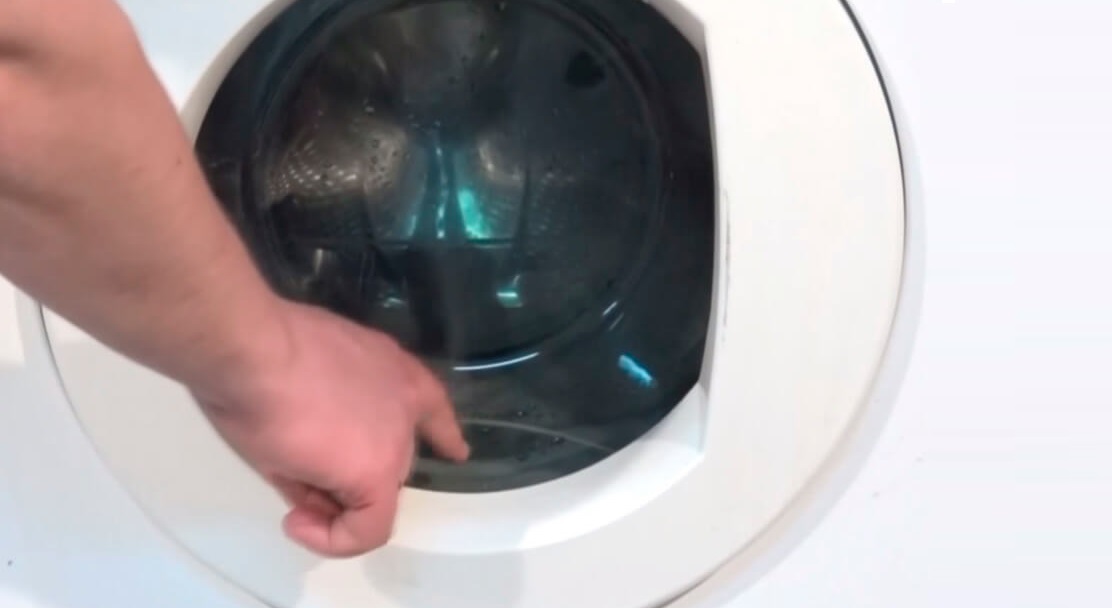
- open the hatch door;
- Collect all spilled water, and scoop out any that remains in the tank using available means.
The most difficult part of this whole operation is opening the machine, especially if it freezes during the working cycle. In this case, the hatch mechanism will remain blocked. You will have to find a way to bypass this blocking. But don’t worry, we’ll tell you what to do in this situation. You should:
- find a long rope or fishing line;
- pass it under the door near the locking mechanism;

- pull the line so that it touches the lock;
- press on it and wait until a characteristic click is heard (after which the hatch will open)
Opening the machine while it is running is quite a difficult task, especially because of the door locking mechanism. This process requires a lot of effort, so it is usually resorted to in extreme cases. In addition, after opening, you will have to manually remove water from the system, and then thoroughly wash the floors from dirt and soapy water, which will take quite a lot of time. This method also does not guarantee that the system will be completely cleaned, because residual water can settle not only to the bottom of the tank, but also into the drainage system.
We will rid the machine of water through the drain pipe
If you still have not been able to remove the liquid, you will have to resort to the last method. Forced draining through the drum pipe is difficult to achieve, but it is extremely effective since the tank will be completely empty. In this case, you can clean the hose yourself. Follow this instruction:
- remove the back panel, first disconnecting all the fasteners;
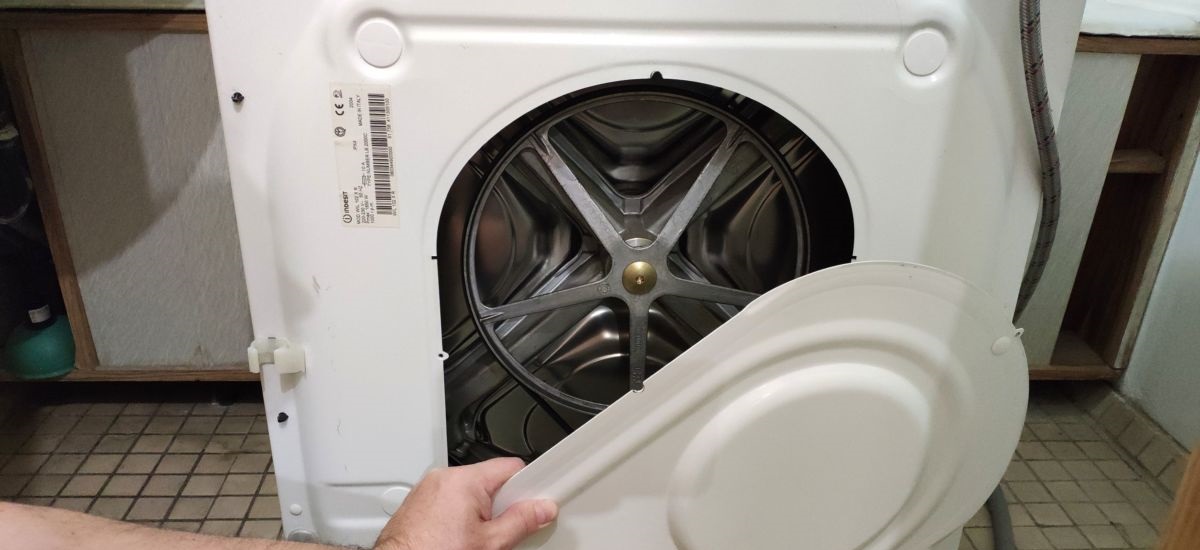
- find the pipe connecting the tank to the pump;
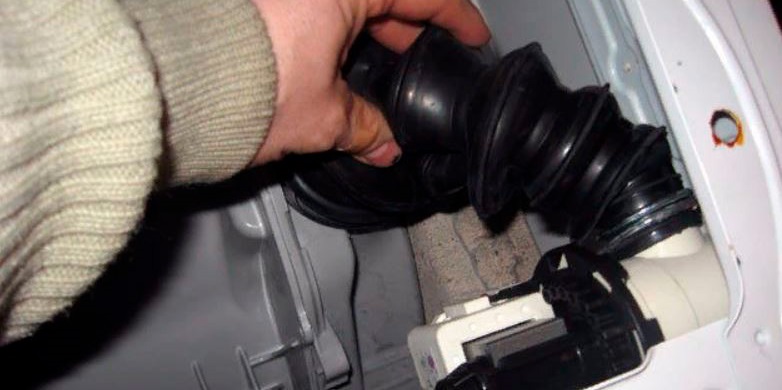
- place a large basin or bucket and lay several rags on the floor;
- loosen the clamp holding the pipe;
- remove the hose from the pump fitting and then place it in a previously prepared water container.
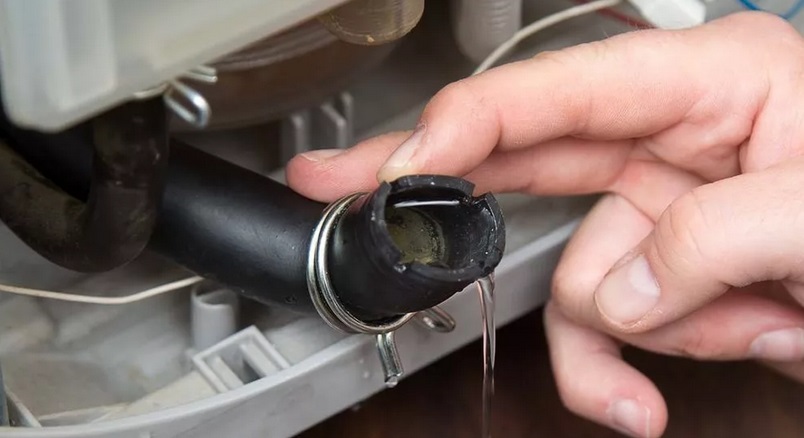
If water still does not come out of the system, a blockage is to blame. You will have to further loosen the second clamp and disconnect the pipe. After which it will need to be thoroughly cleaned of dirt and other debris.
The latter method is quite effective, but it may be impractical for housewives due to the fact that it is necessary to move and partially disassemble the household appliance to get to the drum through its bottom, and then find the spigot by touch. It is important to remember that simply lowering the machine is not enough. A thorough analysis of the system will be required to find and eliminate the cause of the malfunction. Therefore, sometimes it is easier to immediately invite a specialist from the service center to carry out all the necessary procedures and then begin the repair.
Interesting:
Reader comments
- Share your opinion - leave a comment




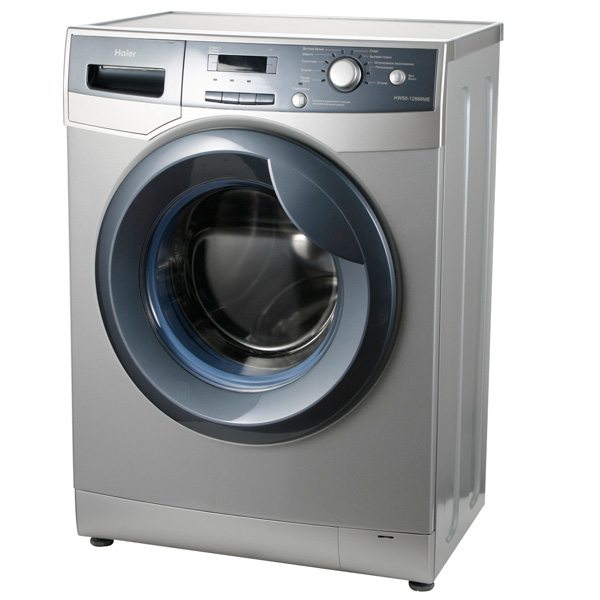

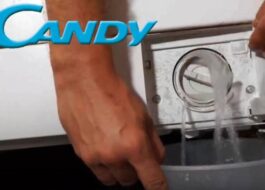














Add a comment